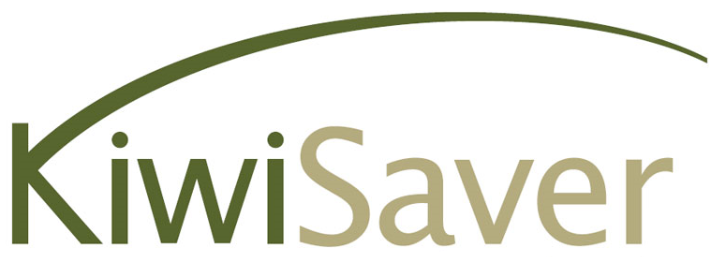First home buyers (FHBs) have got it tough. Despite a softening market, house prices remain sky-high. And, as inflation bites and interest rates rise, the era of cheap mortgages is over.
Fortunately, if you’re trying to save for a home of your own, you can use your KiwiSaver investments as a deposit for a first home. Canstar answers your questions about using KiwiSaver to purchase a first home or a plot of land.

Can I use KiwiSaver to buy a first home?
Yes. KiwiSaver can be used to buy your first home. But there are restrictions and requirements that need to be met.
Can I use KiwiSaver to buy land?
Yes. KiwiSaver can also be used to buy land. But, again, there are certain restrictions and requirements.
How to use KiwiSaver to buy your first home
Last year’s KiwiSaver Report shows that withdrawals by FHBs were up 19%, to $1.4bn. If you’ve money in KiwiSaver you can withdraw almost everything you have in your account (or less if you wish) to use as a first-home deposit.
In order to be eligible for a KiwiSaver withdrawal you must:
- Have had KiwiSaver for at least three years
- Be a FHB (or be in a similar financial position to a FHB)
- Purchase a house (or land) in New Zealand
- Live in the house (it can’t be used as an investment property)
- Leave a minimum of $1000 in your KiwiSaver
- Not have used your KiwiSaver for a first home withdrawal in the past
While this provides an overview of the withdrawal criteria, it pays to talk to your lender and/or KiwiSaver provider to ensure you are eligible. It’s also important to note that not all schemes permit withdrawing funds for this purpose. So, you’ll need to check with your KiwiSaver provider and, if they don’t allow withdrawals, you may need to look into switching providers.
→Related article: KiwiSaver: How to Change KiwiSaver Providers
How to use KiwiSaver to buy land
Using your KiwiSaver to buy land is not much different to using it for an existing first home. The criteria effectively remains the same. You must buy land in New Zealand, with the intention of building a first home on the property (that you will live in). It cannot be for an investment property.
While there is no required timeframe for the build to be completed, to be eligible you may be required to have a concept plan. So again, it pays to talk more in-depth with your lender and/or KiwiSaver provider if you want to pursue this avenue.
However, it pays to note that if you already own land, you can’t then withdraw from your KiwiSaver to fund the build. So if you’re planning to use your savings to buy a plot of land, hoping to then use your KiwiSaver to build, you’re out of luck.
Are there any limits on income or property price?
No. Unlike many other government programs designed to support first-home buyers, there is no price cap on the property you plan to purchase. This means you can buy properties worth millions of dollars, so long as you can source enough money for the deposit and your lender approves your loan application.
Additionally, there are no caps on how much you, or your partner, earn. So, even those on high wages can use their KiwiSaver to help with a first home deposit.

Can KiwiSaver be used for an investment or second property?
No. KiwiSaver cannot be used if you already own a property. It must be for a first home. Additionally, even if the property is your first, it can’t be bought for the intention of being used as an investment property. You must intend to live in the property for at least six months.
I have owned a property in the past, but no longer do. Can I use my KiwiSaver for a house deposit?
Possibly. If you have previously owned property, but no longer do, and your finances are considered to be in a similar position to those of a first home buyer, you may qualify to withdraw KiwiSaver funds towards buying a home.
To do so, you will first need to submit a KiwiSaver first-home withdrawal determination for previous home owner application. This will determine whether you are considered to be in a similar financial position to that of a first home buyer, and subsequently are eligible for a KiwiSaver withdrawal.
You can only use a KiwiSaver first-home withdrawal once
Remember, as mentioned above, while you may be in a similar financial position to an FHB, despite previously owning a home, you can only use the KiwiSaver first-home withdrawal once. So, if you used it for your first property you will not be eligible regardless of your current financial situation.
What else is on offer to help me get my first home?
There are some other ways you can use KiwiSaver to buy land or a first home.
The First Home Grant
A common option is through the First Home Grant. With the First Home Grant, KiwiSaver members can receive a government contribution towards their deposit. While you have to be a KiwiSaver member to be eligible, the contribution comes from the government itself, not from your KiwiSaver account.
→Related article: KiwiSaver: What is the Kāinga Ora First Home Grant?
If you buy an existing home, you can get $1000 for each of the three (or more) years you’ve paid into the scheme. The most you can get is $5000 for five or more years.
If you buy a new build, or land to build on, you can get $2000 for each of the three (or more) years you’ve paid into the scheme. The most you can get is $10,000 for five or more years.
It’s important to note that, unlike a KiwiSaver first-home withdrawal, the First Home Grant has a price limit on the house you are purchasing.
The house price caps are set region by region. There are two price caps for each region, one for buying an existing home, and one for buying a new build. In each region, you have access to more funds when purchasing a new build over an existing property. For the full list of price caps, click here.
Income caps
Furthermore, there are income caps that you cannot exceed if you are to be eligible for the First Home Grant
In the 12 months before you apply, you must have earned:
- $95,000 or less before tax for a single buyer
- $150,000 or less before tax for two or more buyers.
You can learn more here.
The First Home Loan
The First Home Loan is an initiative that allows first home buyers to secure a loan with just a 5% deposit (as opposed to the more common 20% deposit).
Up until recently, the First Home Loan was only available for houses priced under strict regional price caps. However, in this year’s Budget the price caps were removed. However, the same income caps as the First Home Grant do still apply to the First Home Loan.
You can learn more about the First Home Loan here.
Compare home loans with Canstar
First Home Partner
First Home Partner is a scheme in which you team up with Kāinga Ora to buy a first home, be it a new home or an off-the-plan home. If you have a 5% deposit or more, Kāinga Ora will contribute up to 25%, or $200,000, towards the cost of your home. The rest of the money you raise in the normal way, through a mortgage.
Once you settle on a property, you then have up to 25 years to buy back Kāinga Ora’s share of your property. The biggest benefit of First Home Partner is there are no restrictions around house price caps. However, to be eligible, your household income must be under $130,000.
→ Related article: What is First Home Partner? All You Need to Know!
Compare KiwiSaver Providers with Canstar
The comparison table below displays some of the products currently available on Canstar’s database for a KiwiSaver member with a balance of $50,000 in an Aggressive fund, sorted by Star Rating (highest to lowest), followed by company name (alphabetical) – some products may have links to providers’ websites. Use Canstar’s KiwiSaver comparison selector to view a wider range of super funds. Canstar may earn a fee for referrals.
So if you’re looking for the best KiwiSaver, don’t just focus on fees and charges. Do your research, compare providers and look for the provider that best matches your appetite for risk and your long-term goals.
If you want to read more about our latest KiwiSaver Awards, click on the button below.
Compare KiwiSaver providers for free with Canstar!

About the author of this page
This report was written by Canstar Content Producer, Andrew Broadley. Andrew is an experienced writer with a wide range of industry experience. Starting out, he cut his teeth working as a writer for print and online magazines, and he has worked in both journalism and editorial roles. His content has covered lifestyle and culture, marketing and, more recently, finance for Canstar.
Enjoy reading this article?
You can like us on Facebook and get social, or sign up to receive more news like this straight to your inbox.
By subscribing you agree to the Canstar Privacy Policy




Share this article